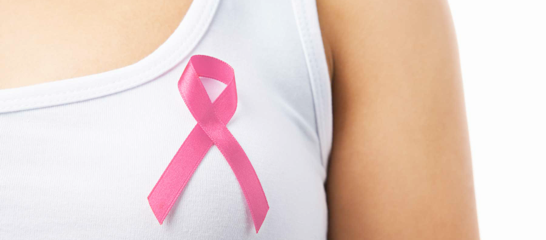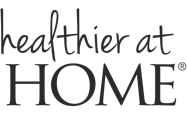




Common Health Problems » Women’s Health
Risk Factors


Self-Care / Prevention
For Cystic Breasts
-
•Do a breast self-exam as advised by your doctor.
-
•Get to and stay at a healthy body weight.
-
•Follow a low saturated fat diet. Eat soy foods.
-
•Limit or have no caffeine.
-
•Limit salt and sodium. This helps to prevent fluid buildup in the breasts.
-
•Don’t smoke. Don’t use nicotine gum or patches.
-
•Take an over-the-counter pain reliever. Take vitamin E, as advised by your doctor.
-
•Wear a bra that provides good support. You may want to wear it while you sleep, too.
For Breast Pain and/or Swelling (without Lesions or Redness)
-
•For pain due to trauma or surgery: Apply cold packs for the first 48 hours. Do this for 10 to 15 minutes at a time. Do it every 2 to 4 hours. After 48 hours, apply heat. Use a hot water bottle, warm shower, etc. Do this 10 to 15 minutes at a time. Do it 4 times a day.
-
•For pain not due to trauma or injury: Apply warm heat. Use a heating pad set on low or a hot water bottle. Do this for 30 minutes. Then apply an ice pack for 10 minutes. Repeat as often as needed.
-
•Take vitamins, as advised by your doctor.
-
•Take an over-the-counter medicine for pain and/or swelling. Take it as directed.
To Reduce the Risk for Breast Cancer
-
•If you are at a high risk for breast cancer, ask your doctor if you should take prescribed medicine, such as raloxifene.
-
•Eat a variety of fruits and vegetables and whole-grain breads and cereals.
-
•Get to and stay at a healthy body weight.
-
•Get 30 or more minutes of moderate activity most days of the week. Daily is better.
-
•Avoid X-rays that aren’t needed. Wear a lead apron when you get dental and other X-rays not of the chest.
-
•Limit alcohol intake to 1 drink per day, if any.
-
•Breast-feed your babies.
-
•To help detect breast cancer, do breast self-exams and have mammograms and professional breast exams, as advised by your doctor.
Breast Awareness & Breast Self-Exam
-
•Breast awareness is knowing how your breasts normally look and feel and checking for changes. You can do this while you shower or get dressed. A breast self-exam (BSE) is a step-by-step method to examine your breasts. Beginning at age 20, ask your health care provider about the pros and cons of doing a BSE. If you choose to do a BSE, examine your breasts during times of the month when they are not normally tender or swollen. If you menstruate, the best time may be within 3 days after your period stops.
-
1.Lie down: Place a pillow under your right shoulder. Put your right hand behind your head. Move the pads of your left hand’s 3 middle fingers, held flat, in small, circular motions as you start to feel your right breast tissue. Use this circular motion in an up and down pattern as you check the entire breast area. This includes the area from your collarbone to the ribs below your breast; and from your right side (from under your arm) to the middle of your chest bone. Feel every part of this entire area with 3 different levels of pressure:
-
-Light – Feel the tissue closest to the skin.
-
-Medium – Feel alittle deeper than the skin.
-
-Firm – Feel the tissue closest to your chest and ribs.
-
2.Squeeze the nipple gently. Check for a clear or bloody discharge.
-
3.Repeat steps 1 and 2 for the left breast using the finger pads of your right hand.
-
4.Stand in front of a mirror. Press your hands firmly on your hips. Look for:
-
-Any changes in the size, shape, or contour of your breasts.
-
-Puckering,scaling, or redness of the skin.
-
-Nipple changes or discharge.
-
5.Sit or stand. Raise your arm slightly. Examine each underarm area for lumps or changes.
If you a find a lump or any change in the way your breasts normally look or feel, let your health care provider know right away. Most lumps that are found and tested are not cancer.
-
•Being a woman is the main risk factor. Yearly, about 192,000 women find out they have breast cancer. About 40,000 women die from it. {Note: Men can get breast cancer, too. Yearly, about 450 men in the U.S. die from breast cancer. Men should look for and report a breast lump or other change to their doctors.}
-
•Increase in age.
-
•Changes in BRCA1, BRCA2, and other cancer genes.
-
•Personal history of breast cancer.
-
•Family history of breast cancer for a woman whose mother, sister, or daughter has had it, especially at an early age.
-
•One or more breast biopsies were done, especially if they showed certain changes in breast tissue.
-
•Dense breast tissue (shown on mammograms).
-
•High-dose radiation to the chest before age 30.
-
•Never giving birth or having a first full term pregnancy after age 30. Never breast-fed a baby.
-
•Menstruation started before age 12. Menopause occurred after age 55.
-
•Being overweight or obese after menopause.
-
•Alcohol. The more used, the higher the risk.
-
•Race. Caucasian women have a greater risk than Asian, African American, Hispanic, and Native American women.
-
•Eastern and Central European Jewish ancestry.
-
•Hormone therapy (estrogen plus progestin) after menopause and/or recent use of birth control pills may be factors.
Ask your doctor about your risk for breast cancer. You can also call 800.4.CANCER (422.6237) or access www.cancer.gov/bcrisktool for the Breast Cancer Risk Assessment Tool.


Resources




Feeling a lump in a breast can be scary. For a lot of women, the first thought is cancer. The good news is that 80 to 90% of breast lumps are not cancer.
Signs & Symptoms
-
•Solid tumors.
-
-Lipomas. These are fatty tumors that can grow very large. They are usually benign.
-
-Fibroadenomas. These lumps are round, solid, and movable. They are usually benign.
-
-Cancerous lumps. Often, these are firm to hard masses that do not move when felt. They are often an irregular shape.
-
•Cysts. These are fluid filled sacs. They are painful and feel lumpy or tender. Cysts can occur near the surface of the skin of the breast. They can also be deep within the breast. This second type may need to be tested with a biopsy to make sure the cyst is benign. Cysts can be very small and diffuse as in fibrocystic breast disease.
-
•Nipple-duct tumors. These occur within the part of the nipple that milk flows through. They cause a discharge from the nipple. These tumors should be removed by surgery. In rare cases, a bloody discharge from the nipple could be a sign of cancer.
Breast cancer often occurs without signs and symptoms. Early screening can help detect it.
Causes
Breast lumps are often caused by fluid filled sacs (cysts), fibroadenomas, and fibrocystic changes. Breast cancer results from malignant tumors that invade and destroy normal tissue. When these tumors break away and spread to other parts of the body, it is called metastasis. Breast cancer can spread to the lymph nodes, lungs, liver, bone, and brain.
Treatment
Benign breast lumps may go away if you breast-feed for many months or take a low-dose birth control pill. Prescribed medicines can get rid of severe breast lumps. These have side effects, though.
For Breast Cancer
-
•Surgery.
-
•Chemotherapy.
-
•Radiation therapy.
-
•Brachytherapy. This is the use of radioactive “seeds.” They are put into the breast at the site where the tumor was removed.
-
•Hormonal therapy.
-
•Stem cell or bone marrow transplant.
-
•Clinical trials.
For Breast Lumps
-
•Mammogram. This X-ray of the breasts can detect breast problems before they can be felt.
-
•Ultrasound. This tells whether the lump is fluid-filled (usually harmless) or solid.
-
•Needle aspiration. With this, a needle is put into the lump to remove fluid or cells.
-
•Biopsy. There are many types. A sample of breast tissue is taken and examined.
-
•Ductal lavage. Fluid is sent through a catheter to the milk ducts. Cells inside the milk ducts are collected and checked for the risk of breast cancer.

Questions to Ask


Do you see or feel any lumps, dimpling, thickening, or puckering in a breast? Or, do you notice any changes in the size, shape, or contour of the breast? If you have been diagnosed with a benign lump, do you notice any new lumps or has a lump changed in size?



Do you have a family history of breast cancer and are you concerned about breast cancer, even if you don’t notice any problems?


Do you have any of these problems?
-
•Redness, swelling, and warmth in a breast.
-
•The skin on a breast appears pink, reddish purple, or bruised.
-
•Pain or constant tenderness in a breast.
-
•Nipples become drawn into the chest, invert totally, change shape, or become crusty from a discharge.
-
•Nonmilky discharge when you squeeze the nipple of either breast.


2012 © All Rights Reserved - American Institute for Preventive Medicine | Disclaimer | Phone: 800.345.2476 | www.HealthyLife.com


